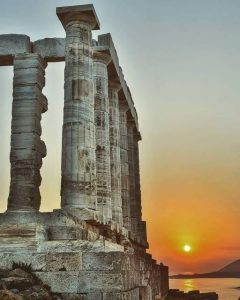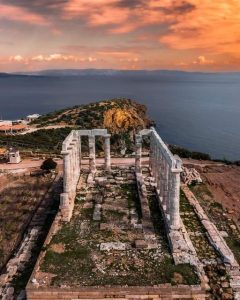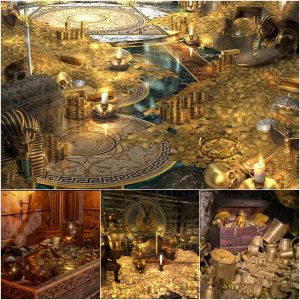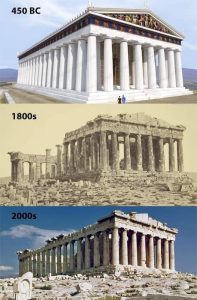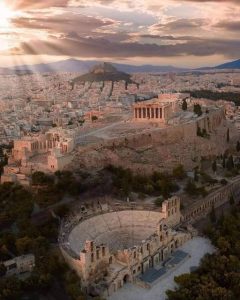Perched dramatically on the cliffs of Cape Sounion, the Temple of Poseidon is one of the most striking monuments of Ancient Greece. This majestic structure stands as a sentinel overlooking the Aegean Sea, offering breathtaking views that have enchanted visitors since its construction in the mid-5th century BC. Today, it remains a powerful symbol of the glory and aesthetic achievements of ancient Greek civilization.
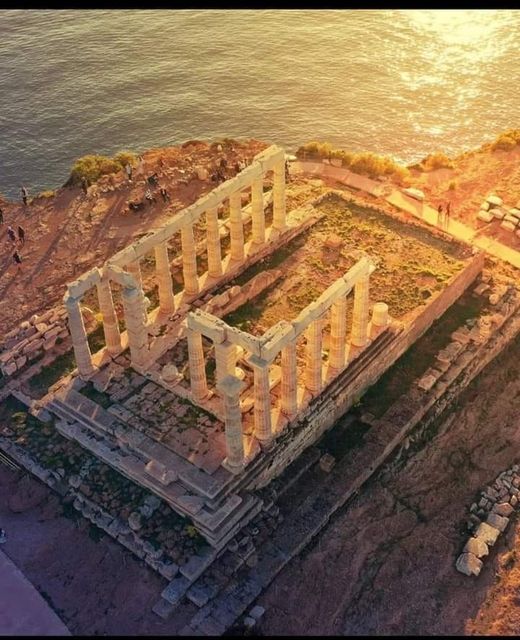
The Temple of Poseidon, as captured in the stunning photograph, basks in the golden glow of a sunset, with its Doric columns silhouetted against the shimmering waters of the sea. This sacred site was strategically positioned at the tip of the Attica Peninsula, serving as both a place of worship and a potent symbol of protection for sailors and the Athenian city-state.
Constructed around 444–440 BC, during the ascendancy of the Athenian Empire, the temple is a brilliant example of Classical Greek temple architecture. It was built to honor Poseidon, god of the sea, storms, and earthquakes—a deity of immense importance to a maritime nation such as ancient Athens. The temple’s design features a peristyle of 6 by 13 columns, each towering over the rugged landscape. The columns, made of locally sourced marble, gleam with a honeyed warmth in the sunlight, their robust and elegant forms embodying the ideal of Doric simplicity and strength.
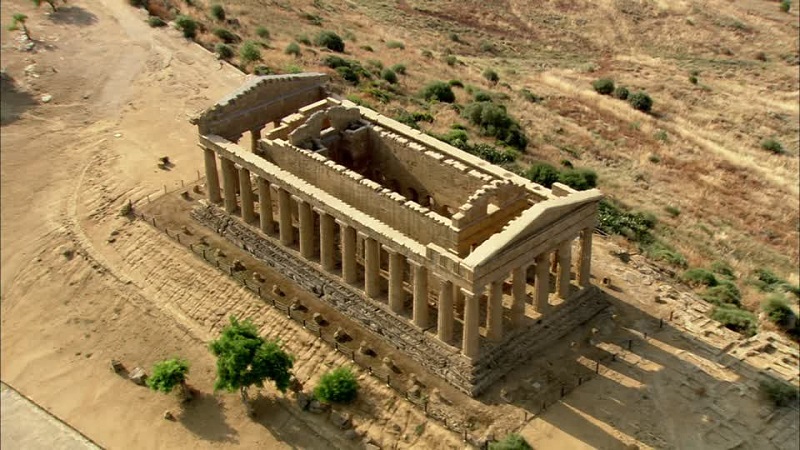
Archaeological evidence suggests that this temple replaced an older one that may have been destroyed during the Persian invasion of 480 BC. The choice of location and the dedication to Poseidon highlight the strategic and spiritual dimensions of seafaring in Greek culture, anchoring the temple’s significance not just in religious terms, but also in its assertion of political and naval power.
Over the centuries, the Temple of Poseidon at Sounion has inspired countless myths and legends, including the tale of Aegeus, the ancient king of Athens, who leapt to his death from the nearby cliffs when he mistakenly believed his son, Theseus, had been killed by the Minotaur in Crete. This dramatic story further enriches the historical tapestry of the site, blending human emotion with divine myth.
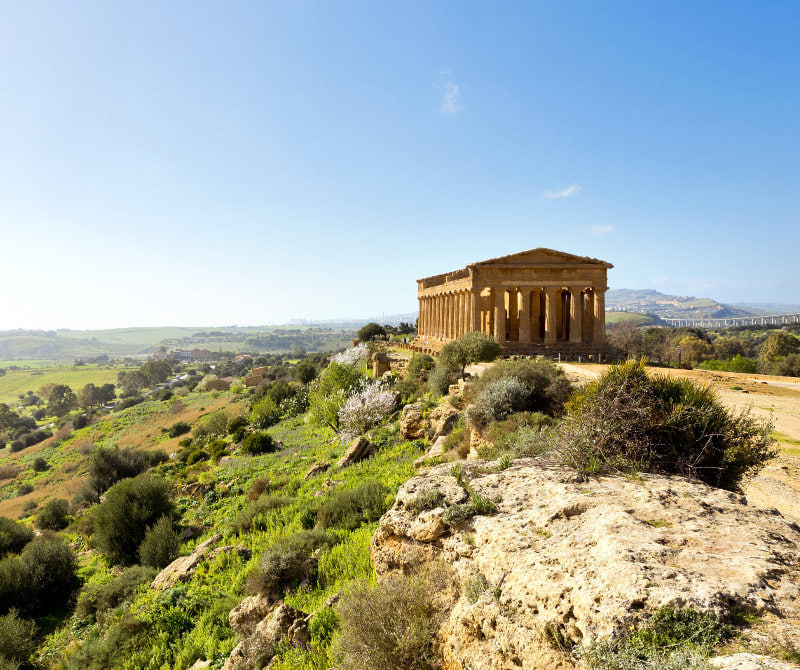
For modern visitors, the temple offers a serene and poignant experience. Standing among the ruins, one can almost hear the whispers of ancient pilgrims and feel the presence of the god of the waves. The site is not only a popular tourist destination but also a favored spot for sunset watchers, who find in the temple’s enduring columns a perfect frame for the day’s end.
The Temple of Poseidon at Sounion, with its compelling blend of natural beauty and architectural grace, continues to be a symbol of the enduring allure of ancient Greece. It remains a profound testament to the Greeks’ architectural genius and their deep reverence for the gods that shaped their world. As the sun sets on Sounion, it leaves behind the glow of history, myth, and beauty, forever captured in the golden stones of this timeless sanctuary.
